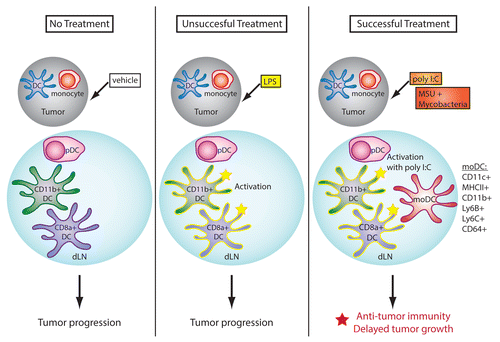Figures & data
Figure 1. Role of monocyte-derived dendritic cells in anticancer immune responses. The activation of antitumor immune responses is associated with the appearance of monocyte-derived dendritic cells (moDCs) in tumor-draining lymph nodes (dLNs). Conversely, “steady-state” DCs are generally unable to sustain antitumor immunity. MoDCs are defined by the co-expression of DC (e.g., CD11c and high levels of MHC class II molecules) and monocyte (e.g., CD64, Ly6C and Ly6B) markers, by their DC-like morphology, and by their elevated immunostimulatory activity in vitro.
